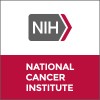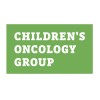
Multimodal Molecular Targeted Therapy to Treat Relapsed or Refractory High-risk Neuroblastoma
Neuroblastoma RecurrentChildren, adolescents and young adults with high risk relapsed or treatment refractory neuroblastoma (rNB) represent a group of patients with dismal prognosis for whom a recommended standard salvage therapy is currently not available. The multimodal metronomic approach combining molecular targeted drugs (rapamycin and dasatinib) with conventional chemotherapy (irinotecan and temozolomide) will be investigated in a randomized fashion as new treatment strategy for patients with rNB. The intention is to assess the therapeutic benefit of molecular targeted drugs for the treatment of rNB. The combination of irinotecan and temozolomide showed activity in the treatment of several solid organ tumors, brain tumors and neuroblastoma. In one study rNB patients received a median of 5 courses of 5 days irinotecan and temozolomide every 3 to 4 weeks with a cumulative dose of 35% lower than in the RIST design. 33% had disease regression with 8% CR or PR. A phase II study in rNB also using irinotecan and temozolomide with a substantially lower intensity showed a response rate of 15%. The combination of a mTOR inhibitor with a multi-kinase inhibitor demonstrated in preclinical studies a synergistic effect on cell cycle arrest, apoptosis and sensitization for radio- and chemotherapy. It is assumed that this combination of molecular targeted drugs with a tolerable conventional chemotherapy consisting of irinotecan and temozolomide can substantially improve the outcome of this patient population. A group of 20 rNB patients treated with the RIST therapy approach in a compassionate use setting showed an overall survival of 55% at a median of 80 weeks with a tolerable adverse event profile.

NK DLI in Patients After Human Leukocyte Antigen (HLA)-Haploidentical Hematopoietic Stem Cell Transplantation...
LeukemiaMyeloid6 moreThis is a phase I/II study of highly selected donor lymphocyte infusions in patients undergoing HLA-haploidentical hemopoietic stem cell transplantation. Patients will be offered "pre-emptive" NK-DLI early after HSCT. Three schedules of NK-cell infusion will be studied: Basel patients (adult and pediatric) will receive NK-DLI on days +40 and +100 (pre-emptive-late); Frankfurt patients (pediatric) will receive NK-DLI on days +3, +40, and +100 (pre-emptive early). Patients not receiving pre-emptive NK-DLI with loss in donor chimerism or with evidence of minimal residual disease will be offered "therapeutic" NK-DLI.

A Phase I Dose Finding and Safety Study of Oral LDE225 in Children and a Phase II Portion to Assess...
MedulloblastomaRhabdomyosarcoma4 morePhase I dose-escalation study to characterize the safety, tolerability, pharmacokinetics and pharmacodynamics of LDE225 given orally on a daily dosing schedule in children with recurrent or refractory medulloblastoma, or other tumors potentially dependent on Hedgehog signaling pathway. Phase II study is to assess preliminary efficacy in both adult and pediatric patients with recurrent or refractory MB.

N2001-02: I-MIBG With Intensive Chemotherapy and Autologous Stem Cell Rescue for High-Risk Neuroblastoma...
NeuroblastomaRATIONALE: Radioactive drugs, such as iodine I 131 metaiodobenzylguanidine, may carry radiation directly to tumor cells and not harm normal cells. Drugs used in chemotherapy, such as carboplatin, etoposide, and melphalan, work in different ways to stop the growth of tumor cells, either by killing the cells or by stopping them from dividing. Radiation therapy uses high-energy x-rays to kill tumor cells. An autologous peripheral stem cell or bone marrow transplant may be able to replace blood-forming cells that were destroyed by chemotherapy and radiation therapy. Giving iodine I 131 metaiodobenzylguanidine and combination chemotherapy with an autologous peripheral stem cell or bone marrow transplant may allow more chemotherapy to be given so that more tumor cells are killed. Giving radiation therapy after an autologous peripheral stem cell or bone marrow transplant may kill any remaining tumor cells. PURPOSE: This phase II trial is studying how well giving iodine I 131 metaiodobenzylguanidine together with combination chemotherapy and radiation therapy works in treating patients who are undergoing an autologous peripheral stem cell or bone marrow transplant for relapsed or refractory neuroblastoma.

Therapy for Children With Advanced Stage High Risk Neuroblastoma
NeuroblastomaThis is a Phase II pilot study of chemotherapy and surgery for children with advanced stage high-risk neuroblastoma utilizing topotecan during an upfront window and other active agents during induction and intensification phases. The primary purpose is to estimate the response rate to an upfront window of two cycles of intravenous topotecan. We hypothesize that the topotecan window will be an effective therapy in terms of the response rate.

Gene Modified Allogeneic Neuroblastoma Cells For Treatment of Relapsed/Refractory Neuroblastoma...
NeuroblastomaNeuroblastoma affects approximately 500 children a year in the United States. When the tumor occurs in infants, it is frequently localized and responds well to therapy. Even disseminated disease can be eradicated in about 75% of infants, and indeed may undergo spontaneous remission. In older children, the prognosis is far worse, and 80% or more of those with disseminated tumor can be expected to relapse within 3 years. This study will utilize the concept of exploiting the immune system to eradicate neuroblastoma. In tumors in which there is consistent expression of tumor specific antigens as part of the malignant process, it may be possible to generate immune T-cells ex-vivo or in-vivo by using the specific protein or peptide(s) derived therefrom and eradicate the tumor. This study will evaluate the use of four to eight injections of IL-2 gene-transduced autologous neuroblastoma cells to induce a local, polyclonal T-cell infiltrate as well as an anti-tumor immune response.

HSV1716 in Patients With Non-Central Nervous System (Non-CNS) Solid Tumors
RhabdomyosarcomaOsteosarcoma7 morePatients with relapsed solid tumors such as sarcomas and neuroblastoma have a poor survival, generally < 20%. There is an urgent need for new treatments that are safe and effective. HSV1716, an oncolytic virus, is a mutant herpes simplex virus (HSV) type I, deleted in the RL1 gene which encodes the protein ICP34.5, a specific determinant of virulence. Mutants lacking the RL1 gene are capable of replication in actively dividing cells but not in terminally differentiated cells - a phenotype exploited to selectively kill tumor cells. In previous clinical studies, HSV1716 has been shown to be safe when injected at doses up to 10^5 plaque forming units (pfu) directly into human high-grade glioma and into normal brain adjacent to tumour, following excision of high-grade glioma. In an extension study, HSV1716 has been shown to be safe when injected at a dose of up to 10^6 pfu directly into brain tumours. Replication of HSV1716 in human glioblastoma in situ has been demonstrated. Following a single administration of HSV1716 by direct injection into active recurrent tumor or brain adjacent to tumor, some patients have lived longer than might have been expected. This study seeks to evaluate the safety of a single injection of HSV1716 in the treatment of extracranial solid tumors in adolescents and young adults. HSV1716 has also proved safe when given by direct intra-tumoural injection in patients with squamous carcinoma of the head and neck, and in patients with malignant melanoma. Replication of HSV mutants in human sarcomas and neuroblastoma in cultured cells and human xenograft models has been demonstrated. This study is designed in two parts. PART 1 of the study specifies a single dose of virus. Participants who experience at least stable disease or relapse following a determination of stable disease, may qualify for subsequent doses in PART 2. PART 2 requires signing of a separate consent. Funding Source - FDA OOPD

Monoclonal Antibody Ch14.18, Sargramostim, Aldesleukin, and Isotretinoin After Autologous Stem Cell...
High Risk NeuroblastomaThis phase III trial is studying the side effects of giving monoclonal antibody Ch14.18 together with sargramostim, aldesleukin, and isotretinoin after autologous stem cell transplant in treating patients with neuroblastoma. Monoclonal antibodies, such as Ch14.18, may find tumor cells and help kill them. Colony-stimulating factors, such as sargramostim, may increase the number of immune cells found in bone marrow or peripheral blood. Aldesleukin may stimulate the white blood cells to kill tumor cells. Isotretinoin may help neuroblastoma cells become more like normal cells, and to grow and spread more slowly. Giving monoclonal antibody Ch14.18 with sargramostim, aldesleukin, and isotretinoin after autologous stem cell transplant may be an effective treatment for neuroblastoma.

hu14.18-Interleukin-2 Fusion Protein in Treating Young Patients With Recurrent or Refractory Neuroblastoma...
NeuroblastomaRATIONALE: Biological therapies such as hu14.18-interleukin-2 fusion protein work in different ways to stimulate the immune system and stop tumor cells from growing. PURPOSE: This phase II trial is studying how well hu14.18-interleukin-2 fusion protein works in treating young patients with recurrent or refractory neuroblastoma.

Biological Therapy in Treating Patients With Neuroblastoma That Has Not Responded to Previous Treatment...
NeuroblastomaRATIONALE: Monoclonal antibodies, such as monoclonal antibody 3F8, can locate tumor cells and either kill them or deliver tumor-killing substances to them without harming normal cells. Beta-glucan, isotretinoin, and sargramostim may increase the effectiveness of monoclonal antibody 3F8 by making tumor cells more sensitive to the monoclonal antibody. Combining different types of biological therapy may kill more tumor cells. PURPOSE: This phase II trial is studying how well giving beta-glucan, isotretinoin, and sargramostim together with monoclonal antibody 3F8 works in treating patients with neuroblastoma that has not responded to previous treatment.
